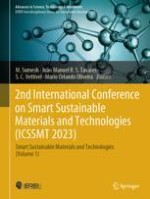Sustainable materials science and engineering is one of the important characteristics of the existing high-tech revolution. The advances of materials science pave way for technical advancements in materials science and industrial technologies throughout the world. Materials are regarded as critical component in all emerging industries. Exquisite preparation and manufacturing must be carried out before a new material may be used. Nevertheless, electronic materials are undeniably important in many aspects of life. Smart materials and structures is a multi-disciplinary platform dedicated to technical advances in smart materials, systems and structures, including intelligent materials, sensing and actuation, adaptive structures, and active control. Recently, sustainable materials and technologies reshape the electronics industry to build realistic applications. At present, without the impact of sustainability, the electronics industry faces challenges. Researchers are now more focused on understanding the fundamental science of nano, micro, and macro-scale aspects of materials and technologies for sustainable development with a special attention toward reducing the knowledge gap between materials and system designs. The main aim of this international conference is to address the new trends on smart sustainable materials field for industrial and electronics applications. The main purpose of this conference is to assess the recent development in the applied science involving research activity from micro- to macro-scale aspects of materials and technologies for sustainable applications. In such a context, particular emphasis is given to research papers tailored in order to improve electronic and industrial applications and market extension of sustainable materials.
